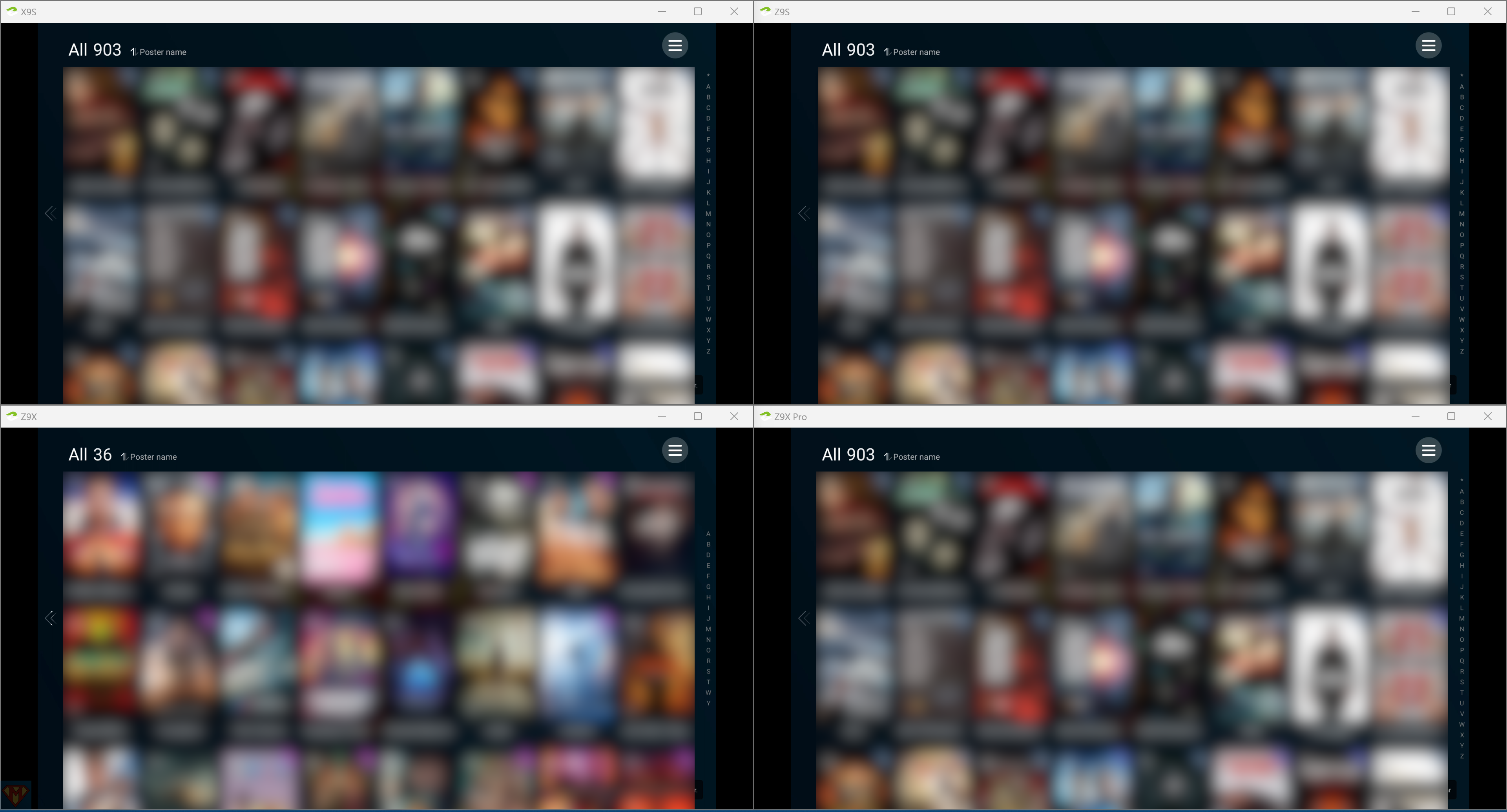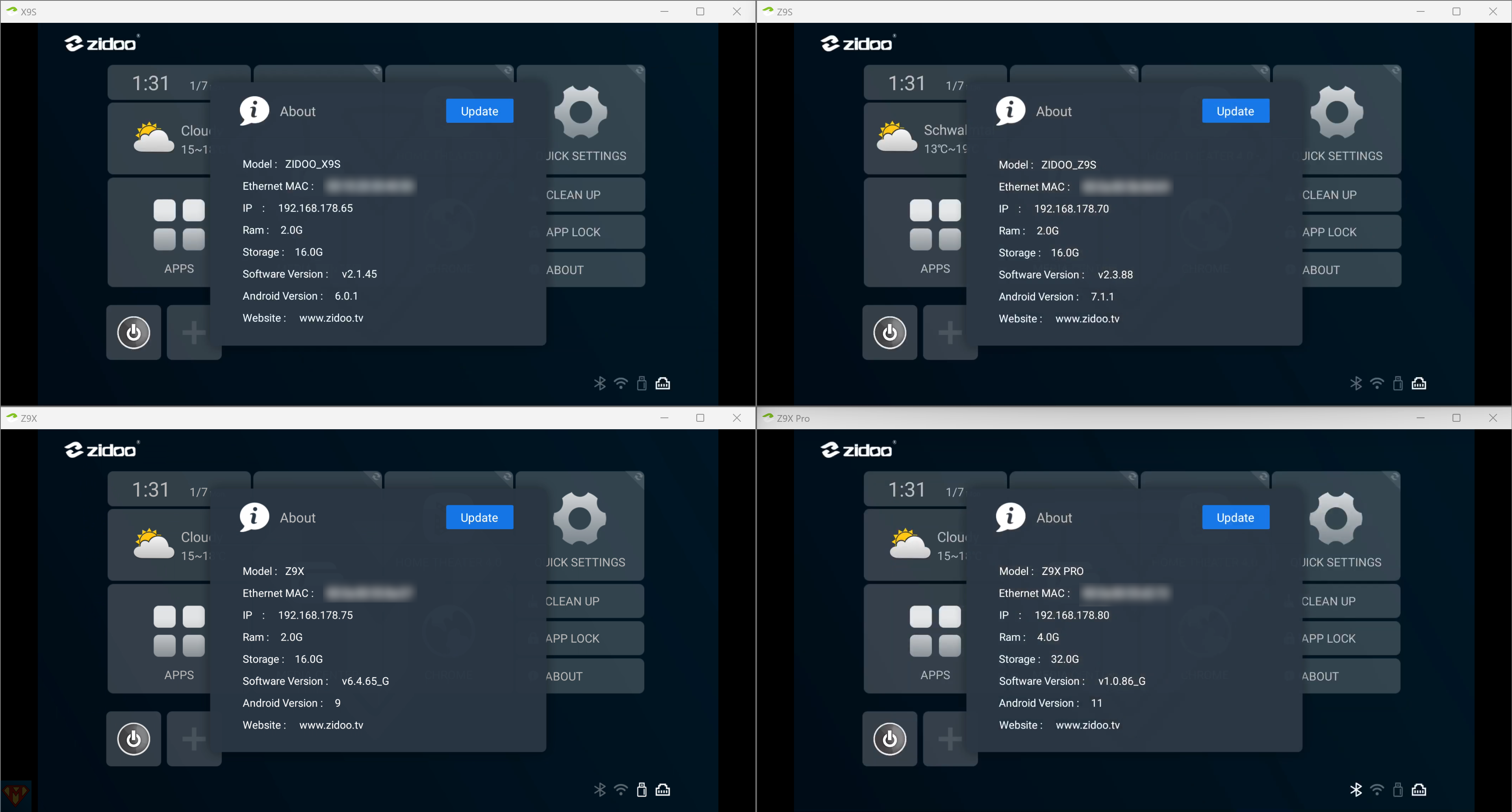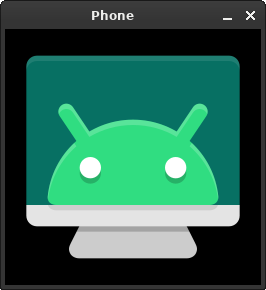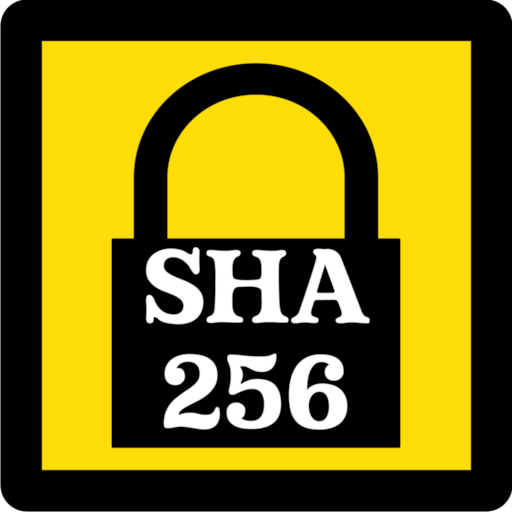pronounced “screen copy“
This application mirrors Android devices (video and audio) connected via USB or over TCP/IP, and allows to control the device with the keyboard and the mouse of the computer. It does not require any root access. It works on Linux, Windows and macOS.
https://github.com/Genymobile/scrcpy
Successfully tested on the

Testbed
supported by


Version
v2.5
Release Date
2024-06-29
SHA-256 checksum file*
Official Download (Windows 64 bit)
Alternative Download (Windows 64 bit)
For additional platforms, please visit https://github.com/Genymobile/scrcpy#get-the-app.

Changes since v2.4:
- Add scrcpy window without video playback (#4727, #4793, #4868)
- Add a shortcut to pause/unpause display (#1632, #4748)
- Forward mouse hover events (#2743, #3070, #5039)
- Add option to configure mouse bindings (#5022)
- Forward all clicks by default for UHID/AOA (#5022)
- Simplify shortcut modifiers (#4741)
- Fix rotation shortcut for Android 14 (#4740, #4841)
- Fix YUV conversion for full color range (#4756)
- Fix camera sizes listing on some devices (#4852)
- Fix thread leak on Windows (#4973)
- Upgrade FFmpeg to 7.0.1 in Windows releases
- Upgrade SDL to 2.30.4 in Windows releases
- Upgrade platform-tools (adb) to 35.0.0 in Windows releases
- Various technical fixes
Highlights
Control-only
By default, scrcpy now always opens a window (unless --no-window is passed), even without video stream (#4868).
In particular, this gives the possibility to solely control the device without screen mirroring:
scrcpy --no-video --no-audio
In that case, UHID mouse mode is used by default. It works both over USB and wirelessly.
This is different from OTG mode, which does not require USB debugging at all. Here, the standard mode is used but with the possibility to disable video playback.
Pause/unpause display
New shortcuts allow to pause (MOD+z) and unpause MOD+Shift+z the display (#4748).
It only impacts rendering, the device is still captured, the video stream transmitted to the device, and recorded if recording is enabled.
This can be useful for example during a presentation, to temporarily move to a different app on the device without showing the content.
Mouse hover
Initially, mouse motion (hover) events were not forwarded to the device when no mouse button was pressed. The reason was that at the time (6 years ago), these events had absolutely no impact on the devices I tested.
But on newer Android versions and newer apps, mouse hover events trigger animations and highlight items. So this new release forwards hover events, with a new option --no-mouse-hover to disable them.
Mouse bindings
By default, mouse secondary clicks triggers shortcuts:
- right click: BACK
- middle click: HOME
- 4th click: APP_SWITCH
- 5th click: expand notification panel
An option --forward-all-clicks had been added some time ago to forward all clicks to the device instead.
This release replaces --forward-all-clicks by a more flexible option --mouse-bind=xxxx. The argument must be exactly 4 characters, one for each secondary click:
--mouse-bind=xxxx
^^^^
||||
||| `- 5th click
|| `-- 4th click
| `--- middle click
`---- right clickEach character must be one of the following:
+: forward the click to the device-: ignore the clickb: trigger shortcut BACK (or turn screen on if off)h: trigger shortcut HOMEs: trigger shortcut APP_SWITCHn: trigger shortcut “expand notification panel”
For example:
scrcpy --mouse-bind=bhsn # the default mode
scrcpy --mouse-bind=++++ # forward all clicks (default for AOA/UHID)
scrcpy --mouse-bind=++bh # forward right and middle clicks,
# use 4th and 5th for BACK and HOMEWith UHID and AOA mouse modes (when the mouse cursor appears on the device), all clicks are now forwarded by default (but the behavior can be changed using --mouse-bind).
scrcpy 2.5 <https://github.com/Genymobile/scrcpy>
Usage: scrcpy [options]
Options:
--always-on-top
Make scrcpy window always on top (above other windows).
--audio-bit-rate=value
Encode the audio at the given bit rate, expressed in bits/s. Unit
suffixes are supported: 'K' (x1000) and 'M' (x1000000).
Default is 128K (128000).
--audio-buffer=ms
Configure the audio buffering delay (in milliseconds).
Lower values decrease the latency, but increase the likelyhood of buffer
underrun (causing audio glitches).
Default is 50.
--audio-codec=name
Select an audio codec (opus, aac, flac or raw).
Default is opus.
--audio-codec-options=key[:type]=value[,...]
Set a list of comma-separated key:type=value options for the device
audio encoder.
The possible values for 'type' are 'int' (default), 'long', 'float' and
'string'.
The list of possible codec options is available in the Android
documentation:
<https://d.android.com/reference/android/media/MediaFormat>
--audio-encoder=name
Use a specific MediaCodec audio encoder (depending on the codec provided
by --audio-codec).
The available encoders can be listed by --list-encoders.
--audio-source=source
Select the audio source (output or mic).
Default is output.
--audio-output-buffer=ms
Configure the size of the SDL audio output buffer (in milliseconds).
If you get "robotic" audio playback, you should test with a higher value
(10). Do not change this setting otherwise.
Default is 5.
-b, --video-bit-rate=value
Encode the video at the given bit rate, expressed in bits/s. Unit
suffixes are supported: 'K' (x1000) and 'M' (x1000000).
Default is 8M (8000000).
--camera-ar=ar
Select the camera size by its aspect ratio (+/- 10%).
Possible values are "sensor" (use the camera sensor aspect ratio),
"<num>:<den>" (e.g. "4:3") or "<value>" (e.g. "1.6").
--camera-id=id
Specify the device camera id to mirror.
The available camera ids can be listed by:
scrcpy --list-cameras
--camera-facing=facing
Select the device camera by its facing direction.
Possible values are "front", "back" and "external".
--camera-high-speed
Enable high-speed camera capture mode.
This mode is restricted to specific resolutions and frame rates, listed
by --list-camera-sizes.
--camera-size=<width>x<height>
Specify an explicit camera capture size.
--camera-fps=value
Specify the camera capture frame rate.
If not specified, Android's default frame rate (30 fps) is used.
--crop=width:height:x:y
Crop the device screen on the server.
The values are expressed in the device natural orientation (typically,
portrait for a phone, landscape for a tablet). Any --max-size value is
computed on the cropped size.
-d, --select-usb
Use USB device (if there is exactly one, like adb -d).
Also see -e (--select-tcpip).
--disable-screensaver
Disable screensaver while scrcpy is running.
--display-buffer=ms
Add a buffering delay (in milliseconds) before displaying. This
increases latency to compensate for jitter.
Default is 0 (no buffering).
--display-id=id
Specify the device display id to mirror.
The available display ids can be listed by:
scrcpy --list-displays
Default is 0.
--display-orientation=value
Set the initial display orientation.
Possible values are 0, 90, 180, 270, flip0, flip90, flip180 and flip270.
The number represents the clockwise rotation in degrees; the "flip"
keyword applies a horizontal flip before the rotation.
Default is 0.
-e, --select-tcpip
Use TCP/IP device (if there is exactly one, like adb -e).
Also see -d (--select-usb).
-f, --fullscreen
Start in fullscreen.
--force-adb-forward
Do not attempt to use "adb reverse" to connect to the device.
-h, --help
Print this help.
-K
Same as --keyboard=uhid.
--keyboard=mode
Select how to send keyboard inputs to the device.
Possible values are "disabled", "sdk", "uhid" and "aoa".
"disabled" does not send keyboard inputs to the device.
"sdk" uses the Android system API to deliver keyboard events to
applications.
"uhid" simulates a physical HID keyboard using the Linux UHID kernel
module on the device.
"aoa" simulates a physical keyboard using the AOAv2 protocol. It may
only work over USB.
For "uhid" and "aoa", the keyboard layout must be configured (once and
for all) on the device, via Settings -> System -> Languages and input ->
Physical keyboard. This settings page can be started directly using the
shortcut MOD+k (except in OTG mode) or by executing: `adb shell am start
-a android.settings.HARD_KEYBOARD_SETTINGS`.
This option is only available when a HID keyboard is enabled (or a
physical keyboard is connected).
Also see --mouse.
--kill-adb-on-close
Kill adb when scrcpy terminates.
--legacy-paste
Inject computer clipboard text as a sequence of key events on Ctrl+v
(like MOD+Shift+v).
This is a workaround for some devices not behaving as expected when
setting the device clipboard programmatically.
--list-cameras
List device cameras.
--list-camera-sizes
List the valid camera capture sizes.
--list-displays
List device displays.
--list-encoders
List video and audio encoders available on the device.
--lock-video-orientation[=value]
Lock capture video orientation to value.
Possible values are "unlocked", "initial" (locked to the initial
orientation), 0, 90, 180 and 270. The values represent the clockwise
rotation from the natural device orientation, in degrees.
Default is "unlocked".
Passing the option without argument is equivalent to passing "initial".
-m, --max-size=value
Limit both the width and height of the video to value. The other
dimension is computed so that the device aspect-ratio is preserved.
Default is 0 (unlimited).
-M
Same as --mouse=uhid.
--max-fps=value
Limit the frame rate of screen capture (officially supported since
Android 10, but may work on earlier versions).
--mouse=mode
Select how to send mouse inputs to the device.
Possible values are "disabled", "sdk", "uhid" and "aoa".
"disabled" does not send mouse inputs to the device.
"sdk" uses the Android system API to deliver mouse eventsto
applications.
"uhid" simulates a physical HID mouse using the Linux UHID kernel module
on the device.
"aoa" simulates a physical mouse using the AOAv2 protocol. It may only
work over USB.
In "uhid" and "aoa" modes, the computer mouse is captured to control the
device directly (relative mouse mode).
LAlt, LSuper or RSuper toggle the capture mode, to give control of the
mouse back to the computer.
Also see --keyboard.
--mouse-bind=xxxx
Configure bindings of secondary clicks.
The argument must be exactly 4 characters, one for each secondary click
(in order: right click, middle click, 4th click, 5th click).
Each character must be one of the following:
'+': forward the click to the device
'-': ignore the click
'b': trigger shortcut BACK (or turn screen on if off)
'h': trigger shortcut HOME
's': trigger shortcut APP_SWITCH
'n': trigger shortcut "expand notification panel"
Default is 'bhsn' for SDK mouse, and '++++' for AOA and UHID.
-n, --no-control
Disable device control (mirror the device in read-only).
-N, --no-playback
Disable video and audio playback on the computer (equivalent to
--no-video-playback --no-audio-playback).
--no-audio
Disable audio forwarding.
--no-audio-playback
Disable audio playback on the computer.
--no-cleanup
By default, scrcpy removes the server binary from the device and
restores the device state (show touches, stay awake and power mode) on
exit.
This option disables this cleanup.
--no-clipboard-autosync
By default, scrcpy automatically synchronizes the computer clipboard to
the device clipboard before injecting Ctrl+v, and the device clipboard
to the computer clipboard whenever it changes.
This option disables this automatic synchronization.
--no-downsize-on-error
By default, on MediaCodec error, scrcpy automatically tries again with a
lower definition.
This option disables this behavior.
--no-key-repeat
Do not forward repeated key events when a key is held down.
--no-mipmaps
If the renderer is OpenGL 3.0+ or OpenGL ES 2.0+, then mipmaps are
automatically generated to improve downscaling quality. This option
disables the generation of mipmaps.
--no-mouse-hover
Do not forward mouse hover (mouse motion without any clicks) events.
--no-power-on
Do not power on the device on start.
--no-video
Disable video forwarding.
--no-video-playback
Disable video playback on the computer.
--no-window
Disable scrcpy window. Implies --no-video-playback and --no-control.
--orientation=value
Same as --display-orientation=value --record-orientation=value.
--otg
Run in OTG mode: simulate physical keyboard and mouse, as if the
computer keyboard and mouse were plugged directly to the device via an
OTG cable.
In this mode, adb (USB debugging) is not necessary, and mirroring is
disabled.
LAlt, LSuper or RSuper toggle the mouse capture mode, to give control of
the mouse back to the computer.
Keyboard and mouse may be disabled separately using--keyboard=disabled
and --mouse=disabled.
It may only work over USB.
See --keyboard and --mouse.
-p, --port=port[:port]
Set the TCP port (range) used by the client to listen.
Default is 27183:27199.
--pause-on-exit[=mode]
Configure pause on exit. Possible values are "true" (always pause on
exit), "false" (never pause on exit) and "if-error" (pause only if an
error occured).
This is useful to prevent the terminal window from automatically
closing, so that error messages can be read.
Default is "false".
Passing the option without argument is equivalent to passing "true".
--power-off-on-close
Turn the device screen off when closing scrcpy.
--prefer-text
Inject alpha characters and space as text events instead of key events.
This avoids issues when combining multiple keys to enter a special
character, but breaks the expected behavior of alpha keys in games
(typically WASD).
--print-fps
Start FPS counter, to print framerate logs to the console. It can be
started or stopped at any time with MOD+i.
--push-target=path
Set the target directory for pushing files to the device by drag & drop.
It is passed as is to "adb push".
Default is "/sdcard/Download/".
-r, --record=file.mp4
Record screen to file.
The format is determined by the --record-format option if set, or by the
file extension.
--raw-key-events
Inject key events for all input keys, and ignore text events.
--record-format=format
Force recording format (mp4, mkv, m4a, mka, opus, aac, flac or wav).
--record-orientation=value
Set the record orientation.
Possible values are 0, 90, 180 and 270. The number represents the
clockwise rotation in degrees.
Default is 0.
--render-driver=name
Request SDL to use the given render driver (this is just a hint).
Supported names are currently "direct3d", "opengl", "opengles2",
"opengles", "metal" and "software".
<https://wiki.libsdl.org/SDL_HINT_RENDER_DRIVER>
--require-audio
By default, scrcpy mirrors only the video when audio capture fails on
the device. This option makes scrcpy fail if audio is enabled but does
not work.
-s, --serial=serial
The device serial number. Mandatory only if several devices are
connected to adb.
-S, --turn-screen-off
Turn the device screen off immediately.
--shortcut-mod=key[+...][,...]
Specify the modifiers to use for scrcpy shortcuts.
Possible keys are "lctrl", "rctrl", "lalt", "ralt", "lsuper" and
"rsuper".
Several shortcut modifiers can be specified, separated by ','.
For example, to use either LCtrl or LSuper for scrcpy shortcuts, pass
"lctrl,lsuper".
Default is "lalt,lsuper" (left-Alt or left-Super).
-t, --show-touches
Enable "show touches" on start, restore the initial value on exit.
It only shows physical touches (not clicks from scrcpy).
--tcpip[=ip[:port]]
Configure and reconnect the device over TCP/IP.
If a destination address is provided, then scrcpy connects to this
address before starting. The device must listen on the given TCP port
(default is 5555).
If no destination address is provided, then scrcpy attempts to find the
IP address of the current device (typically connected over USB), enables
TCP/IP mode, then connects to this address before starting.
--time-limit=seconds
Set the maximum mirroring time, in seconds.
--tunnel-host=ip
Set the IP address of the adb tunnel to reach the scrcpy server. This
option automatically enables --force-adb-forward.
Default is localhost.
--tunnel-port=port
Set the TCP port of the adb tunnel to reach the scrcpy server. This
option automatically enables --force-adb-forward.
Default is 0 (not forced): the local port used for establishing the
tunnel will be used.
-v, --version
Print the version of scrcpy.
-V, --verbosity=value
Set the log level (verbose, debug, info, warn or error).
Default is info.
--v4l2-sink=/dev/videoN
Output to v4l2loopback device.
It requires to lock the video orientation (see
--lock-video-orientation).
This feature is only available on Linux.
--v4l2-buffer=ms
Add a buffering delay (in milliseconds) before pushing frames. This
increases latency to compensate for jitter.
This option is similar to --display-buffer, but specific to V4L2 sink.
Default is 0 (no buffering).
This option is only available on Linux.
--video-codec=name
Select a video codec (h264, h265 or av1).
Default is h264.
--video-codec-options=key[:type]=value[,...]
Set a list of comma-separated key:type=value options for the device
video encoder.
The possible values for 'type' are 'int' (default), 'long', 'float' and
'string'.
The list of possible codec options is available in the Android
documentation:
<https://d.android.com/reference/android/media/MediaFormat>
--video-encoder=name
Use a specific MediaCodec video encoder (depending on the codec provided
by --video-codec).
The available encoders can be listed by --list-encoders.
--video-source=source
Select the video source (display or camera).
Camera mirroring requires Android 12+.
Default is display.
-w, --stay-awake
Keep the device on while scrcpy is running, when the device is plugged
in.
--window-borderless
Disable window decorations (display borderless window).
--window-title=text
Set a custom window title.
--window-x=value
Set the initial window horizontal position.
Default is "auto".
--window-y=value
Set the initial window vertical position.
Default is "auto".
--window-width=value
Set the initial window width.
Default is 0 (automatic).
--window-height=value
Set the initial window height.
Default is 0 (automatic).
Shortcuts:
In the following list, MOD is the shortcut modifier. By default, it's (left)
Alt or (left) Super, but it can be configured by --shortcut-mod (see above).
MOD+f
Switch fullscreen mode
MOD+Left
Rotate display left
MOD+Right
Rotate display right
MOD+Shift+Left
MOD+Shift+Right
Flip display horizontally
MOD+Shift+Up
MOD+Shift+Down
Flip display vertically
MOD+z
Pause or re-pause display
MOD+Shift+z
Unpause display
MOD+g
Resize window to 1:1 (pixel-perfect)
MOD+w
Double-click on black borders
Resize window to remove black borders
MOD+h
Middle-click
Click on HOME
MOD+b
MOD+Backspace
Right-click (when screen is on)
Click on BACK
MOD+s
4th-click
Click on APP_SWITCH
MOD+m
Click on MENU
MOD+Up
Click on VOLUME_UP
MOD+Down
Click on VOLUME_DOWN
MOD+p
Click on POWER (turn screen on/off)
Right-click (when screen is off)
Power on
MOD+o
Turn device screen off (keep mirroring)
MOD+Shift+o
Turn device screen on
MOD+r
Rotate device screen
MOD+n
5th-click
Expand notification panel
MOD+Shift+n
Collapse notification panel
MOD+c
Copy to clipboard (inject COPY keycode, Android >= 7 only)
MOD+x
Cut to clipboard (inject CUT keycode, Android >= 7 only)
MOD+v
Copy computer clipboard to device, then paste (inject PASTE keycode,
Android >= 7 only)
MOD+Shift+v
Inject computer clipboard text as a sequence of key events
MOD+k
Open keyboard settings on the device (for HID keyboard only)
MOD+i
Enable/disable FPS counter (print frames/second in logs)
Ctrl+click-and-move
Pinch-to-zoom and rotate from the center of the screen
Shift+click-and-move
Tilt (slide vertically with two fingers)
Drag & drop APK file
Install APK from computer
Drag & drop non-APK file
Push file to device (see --push-target)
Environment variables:
ADB
Path to adb executable
ANDROID_SERIAL
Device serial to use if no selector (-s, -d, -e or --tcpip=<addr>) is
specified
SCRCPY_ICON_PATH
Path to the program icon
SCRCPY_SERVER_PATH
Path to the server binary
Exit status:
0 Normal program termination
1 Start failure
2 Device disconnected while runningAs precondition, please read the guide “How to use Android Debug Bridge” first.
scrcpy Wiki
scrcpy Shortcuts
Download Zidoo.png
Windows Terminal
@ECHO OFF
SETLOCAL
SET SCRCPY_ICON_PATH=<path to image>\Zidoo.png
SET SCRCPY_OPTIONS=[options]
scrcpy-noconsole.vbs %SCRCPY_OPTIONS% --tcpip="<IP-Adress>:5555" --window-title="<Player name>"@ECHO OFF
SETLOCAL
SET SCRCPY_ICON_PATH=K:\Zidoo\Pictures\Zidoo.png
SET SCRCPY_OPTIONS=--no-cleanup --video-bit-rate=15M --video-encoder 'OMX.realtek.video.enc.avc' --no-audio --force-adb-forward
scrcpy-noconsole.vbs %SCRCPY_OPTIONS% --tcpip="zidoo-x9s:5555" --window-title="X9S"@ECHO OFF
SETLOCAL
SET SCRCPY_ICON_PATH=K:\Zidoo\Pictures\Zidoo.png
SET SCRCPY_OPTIONS=--no-cleanup --video-bit-rate=15M --video-encoder 'OMX.realtek.video.enc.avc' --no-audio --force-adb-forward
scrcpy-noconsole.vbs %SCRCPY_OPTIONS% --tcpip="zidoo-z9s:5555" --window-title="Z9S"@ECHO OFF
SETLOCAL
SET SCRCPY_ICON_PATH=K:\Zidoo\Pictures\Zidoo.png
SET SCRCPY_OPTIONS=--no-cleanup --video-bit-rate=15M --video-encoder 'OMX.google.h264.encoder' --no-audio
scrcpy-noconsole.vbs %SCRCPY_OPTIONS% --tcpip="zidoo-z9x:5555" --window-title="Z9X"@ECHO OFF
SETLOCAL
SET SCRCPY_ICON_PATH=K:\Zidoo\Pictures\Zidoo.png
SET SCRCPY_OPTIONS=--no-cleanup --video-bit-rate=15M --video-encoder='OMX.realtek.video.enc.avc' --no-audio
scrcpy-noconsole.vbs %SCRCPY_OPTIONS% --tcpip="zidoo-z9xpro:5555" --window-title="Z9X Pro"






